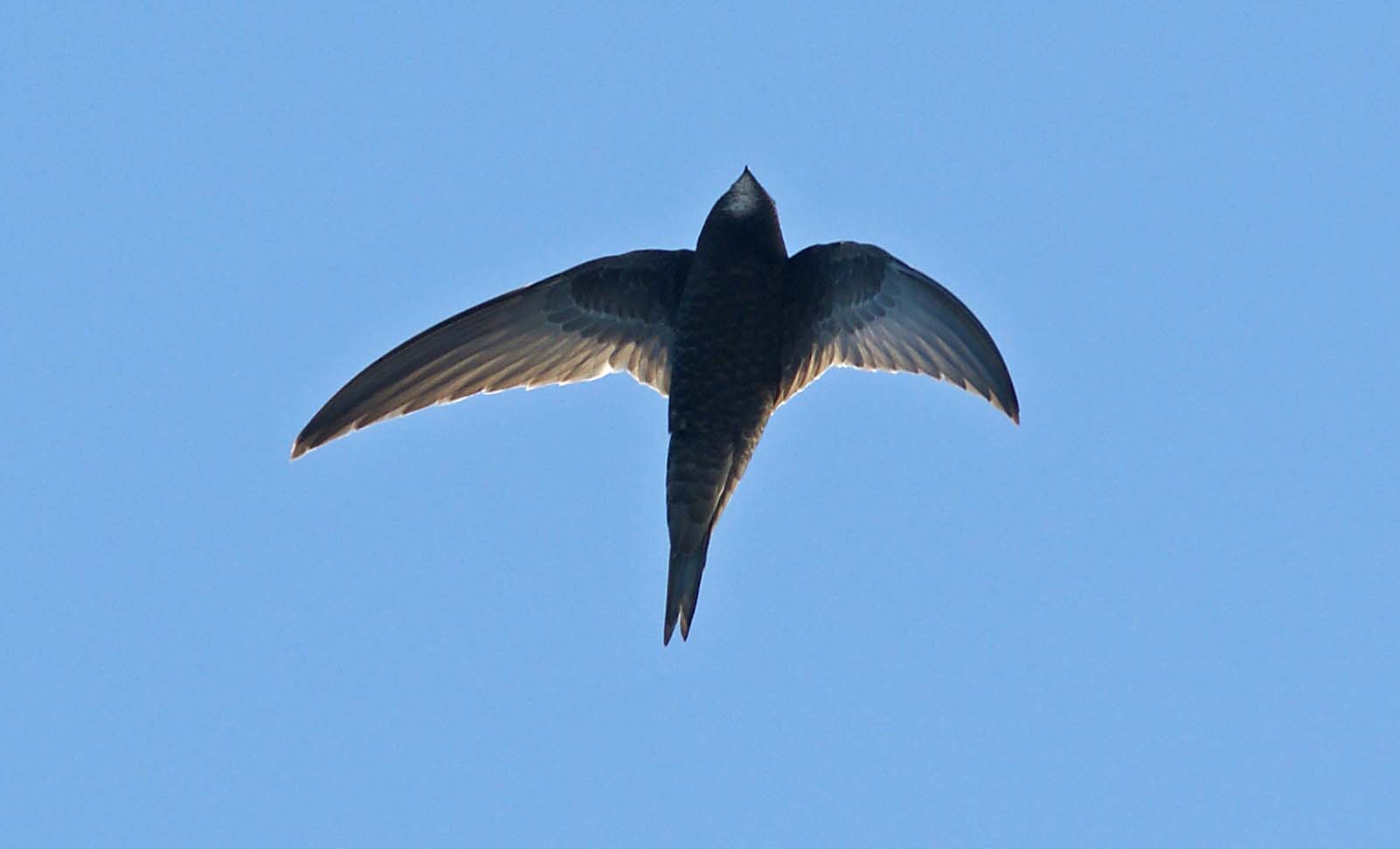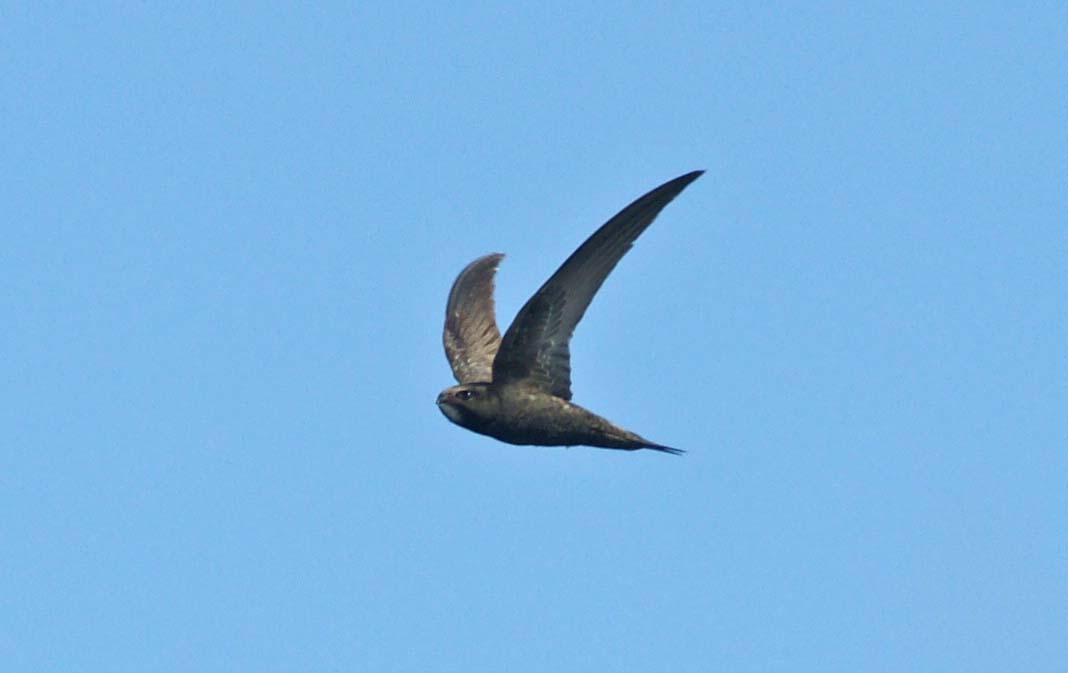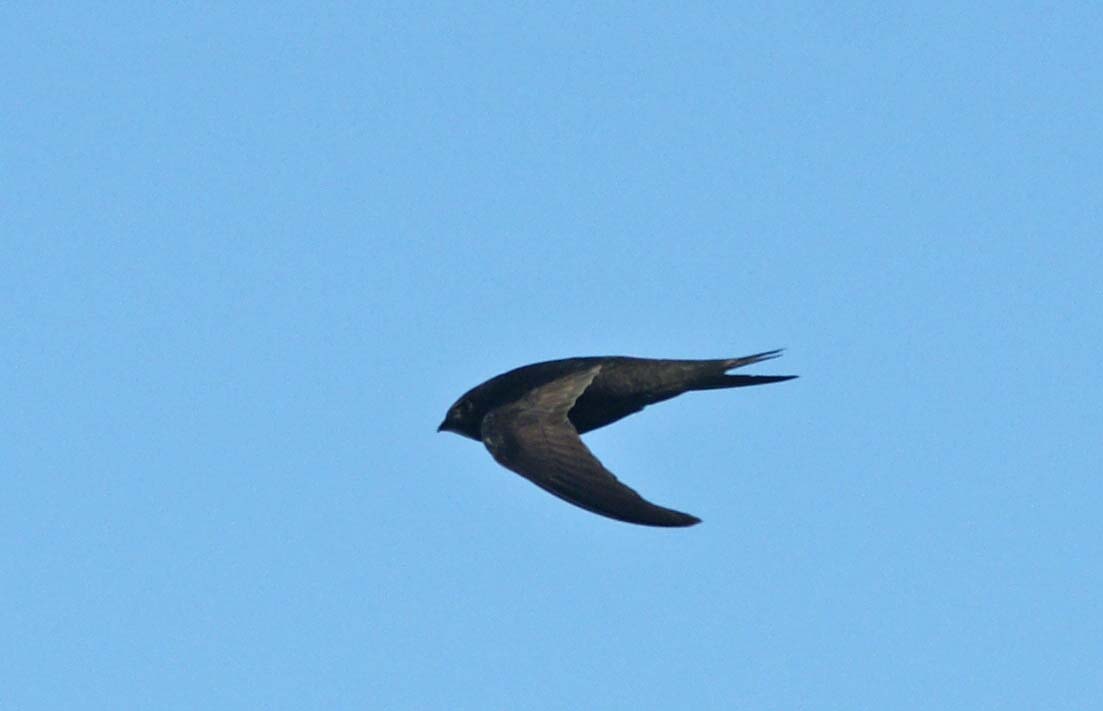 Common Swift (Apus apus)
Common Swift (Apus apus)
 Common Swift (Apus apus)
Common Swift (Apus apus) |
 |
| Pictures (click on them to enlarge) | ||
|---|---|---|
 © Jim Saulino |  © Jim Saulino |  © Jim Saulino |
| Common Swift: The photos of this Swift constitute the first observation of this bird in South America and of course it is also NEW FOR SURINAME (as we count, it is number 740 on the checklist of birds). It was observed and photographed on the 12th of July 2012 by Jim Saulino and Andy Williams on board of a research vessel in front of the coast of Suriname about 280 km out on sea. The bird was first misidentified and the photo ended up on internet where it was seen by Brooke Keeney. Arie Spaans got a message by Tom Schulenberg at the end of June 2013 and we (Spaans, Ottema and Ribot) are now pretty sure it is a Common Swift, a bird common in Europe, Asia and wintering in Africa. More pictures were made that day. The common Swift is a remarkable bird as it can mate in flight and can sleep on the wing and so stay airborne for many months A common Swift was already seen in Bermuda and probably in Eastern America, according to 'Birds in North America' by National Geographic, so crossing the Atlantic seems to happen more often. |
|
|
||||||||||||||||||||||||||||||||||||||||||||
| Observations through the year | Observations of breeding through the year |
|---|---|
| The 1 reported observations of this bird in Suriname, mainly for the last 50 years up to 2018, have been grouped by month. More birds on one day are counted as one observation. Of course, if the graph should depict the total number of birds seen, the differences between the months could be much more pronounced. | The reported breeding observations of this bird in Suriname. Most observations are about nest with eggs, some about fledglings, or feeding at a nest or the building of a nest. Of the about 5000 nests and eggs found for all species together, about 1/3 comes from the egg collection of Penard between 1896 and 1905. For some reason most collecting then was done in the first half of each year, so the shown distribution does not necessarily reflect the actual breeding preferences. The main dry season in Suriname is reckoned to be from half August to the end of November, the main wet season from half April to half August, but the the timing of begin and end does vary from year to year. Around March a second dry season often occurs. |